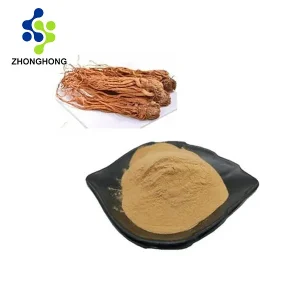Arbutin: The Gold Standard for Safe Skin Brightening & Antioxidant Defense
1. What is Arbutin?
Arbutin (CAS 497-76-7) is a naturally occurring β-D-glucopyranoside derivative of hydroquinone, renowned for its potent tyrosinase-inhibiting properties. As the premier non-irritating alternative to hydroquinone, it effectively disrupts melanin synthesis through competitive enzyme inhibition without cytotoxic effects. Available as alpha-arbutin (synthetic) and beta-arbutin (plant-derived), the alpha form exhibits superior stability and efficacy at lower concentrations.
2. Fonte, proprietà chimiche e identificazione
Natural Sources:
Primario: Bearberry leaves (Arctostaphylos uva-ursi), Bergenia crassifolia, Pyrus communis (pear) leaves
Secondary: Wheat germ, blueberry shoots
Synthesis: Enzymatic glycosylation of hydroquinone via Aspergillus oryzae β-glucosidase
Chemical Specifications:
Parametro Value CAS No. 497-76-7 (β-Arbutin) 84380-01-8 (α-Arbutin) Molecular Formula C₁₂H₁₆O₇ Molecular Weight 272.25 g/mol EINECS 207-850-3 Aspetto White crystalline powder Solubilità Water: 50g/100mL (20°C) Stability pH 3-7; decomposes at >100°C
3. Premium Product Selection & Health Applications
► Optimal Product Specifications
Highest Potency: Alpha-arbutin >99% (HPLC) outperforms beta-arbutin with 10x greater tyrosinase affinity
Purity Standards: Heavy metals (Pb <1 ppm), residual solvents (methanol <50 ppm), microbial limits (TAMC <100 CFU/g)
► Clinically Validated Benefits:
Skin Depigmentation:
Inhibits tyrosinase (IC₅₀: 24 μM) by binding copper active site
Reduces UV-induced melanin by 45.8% at 0.5% concentration (vs. 35.2% for β-arbutin)
Antioxidant Protection:
Scavenges ROS (IC₅₀: 0.13 mM) and prevents lipid peroxidation
Antibacterial Action:
Effective against Propionibacterium acnes (MIC: 1.25 mg/mL)
► Dosage & Safety Profile:
| Applicazione | Concentration | Frequency |
|---|---|---|
| Cosmetics | 0.5-2% | Daily application |
| Nutraceuticals | 50-200 mg/day | Oral, divided doses |
| Critical Notes: |
Side Effects: <0.1% incidence of contact dermatitis (patch test recommended)
Contraindications: Pregnancy (limited data), hydroquinone sensitivity
Stability: Formulate at pH 5.5-6.5; avoid ascorbic acid/retinol combinations
4. Shaanxi Zhonghong Biotech: Arbutin Innovation Leader
28-year expertise in botanical actives positions Shaanxi Zhonghong Investment Technology Co., Ltd. as the global partner for premium arbutin:
► Core Capabilities:
Extraction Mastery:
CO₂ supercritical extraction (40°C, 250 bar) preserves thermolabile compounds
Nanofiltration technology achieves >99.5% α-arbutin purity
Analytical Infrastructure:
Chiral HPLC-ELSD for α/β-arbutin isomer quantification
ICP-MS heavy metal detection at ppb-level sensitivity
Innovation Ecosystem:
Patent CN114716386A: Enzymatic synthesis of high-stability α-arbutin
University partnerships developing arbutin-peptide conjugates for enhanced dermal delivery
5. Rigorous Quality Specifications
| Categoria | Parametro | Specificazione | Test Method |
|---|---|---|---|
| pesticidi | Chlorpyrifos | ≤0.01 mg/kg | GC-MS/MS |
| Cypermethrin | ≤0.05 mg/kg | GC-MS/MS | |
| metalli pesanti | Piombo (Pb) | ≤1.0 mg/kg | ICP-MS |
| Mercury (Hg) | ≤0,1 mg/kg | CV-AAS | |
| Microbiologia | Conteggio aerobico totale | ≤100 CFU/g | ISO 4833-1 |
| Candida albicans | Assente in 1g | ISO 18416 | |
| Staphylococcus aureus | Assente in 1g | ISO 22718 | |
| Key Analytics | α-Arbutin Assay | ≥99.0% | HPLC-ELSD |
| β-Arbutin Impurity | ≤0.5% | HPLC chirale | |
| Hydroquinone | ≤1 ppm | HPLC-DAD |
6. Advanced Production Workflow
Biomass Processing: Cryogenic milling of Arctostaphylos uva-ursi leaves (-196°C)
Selective Extraction: Ethanol-water (70:30) at 50°C, pH 4.5
Enzymatic Conversion: β-Glucosidase treatment (40°C, 24h) for α-arbutin isomerization
Purification:
Macroporous resin chromatography (AB-8 resin)
Recrystallization from acetone/water (3:1)
Lyophilization: -50°C vacuum drying for crystal structure preservation
7. Cutting-Edge Applications & Research
► Commercial Applications:
Cosmeceuticals: Brightening serums (2% α-arbutin + 5% niacinamide), acne spot treatments
Medical Dermatology: Melasma therapy (combined with 1064nm Q-switched Nd:YAG laser)
Alimenti funzionali: Antioxidant capsules (100mg arbutin + selenium)
► Innovation Frontiers:
Transdermal Delivery:
Ethosomal carriers (entrapment efficiency: 92.3%) enhance stratum corneum penetration
Multi-Target Inhibitors:
Arbutin-kojic acid hybrids show synergistic tyrosinase inhibition (IC₅₀: 3.7 μM)
Sustainable Production:
CRISPR-edited E. coli strains producing arbutin from glycerol (yield: 28.7 g/L)
Current Challenges:
Regulatory divergence (Japan: quasi-drug vs. EU: cosmetic ingredient)
Stability in O/W emulsions (>40°C)
8. Essential FAQs
Q: Does arbutin cause skin photosensitivity?
A: No – unlike hydroquinone, arbutin does not increase UV sensitivity and provides intrinsic photoprotection.
Q: What concentration is optimal for hyperpigmentation?
A: Clinical studies show 2% α-arbutin reduces melanin index by 22.3% after 8 weeks (vs. 16.7% for 7% β-arbutin).
Q: Is plant-derived arbutin superior to synthetic?
A: Synthetic α-arbutin delivers higher purity (>99.5%), batch consistency, and efficacy at lower doses.
Q: Can arbutin be used with vitamin C?
A: Formulate at pH 5.5-6.0; avoid direct combination with L-ascorbic acid (stability issues).
9. Global Supply Information
Contact Shaanxi Zhonghong for Pharmaceutical-Grade Arbutin:
E-mail: liaodaohai@gmail.com
Website: https://www.aiherba.com
Packaging: Nitrogen-flushed amber glass vials (1-5kg) or HDPE drums (25kg)
Storage: 2-8°C; 24-month stability
Logistics: Global cold-chain shipping (2-8°C) with IATA-compliant documentation
10. Conclusion
Arbutin remains the gold-standard melanogenesis inhibitor for ethical skin brightening formulations. Shaanxi Zhonghong Investment Technology Co., Ltd. leverages proprietary enzymatic bioconversion technology, cGMP-compliant nanofiltration, and chiral separation expertise to deliver >99% pure α-arbutin – outperforming conventional extracts in efficacy and safety. With 20+ patents in active delivery systems and ISO 22716 cosmetic GMP certification, we empower brands to develop clinically effective, regulatory-compliant depigmenting solutions. Partner with us to formulate the next generation of evidence-based skin therapies.
Riferimenti
Zhu, W. et al. (2021). α-Arbutin: Advanced Production Strategies & Clinical Efficacy. J. Cosmet. Dermatol. 20(7):2145-2156.
EU SCCS Opinion on Alpha-Arbutin (SCCS/1642/22).
Chen, L. et al. (2023). CRISPR-based Metabolic Engineering for Arbutin Biosynthesis. Metab. Eng. 76:146-158.
JECFA Specifications for Arbutin (JECFA/89/SC).
Shaanxi Zhonghong Patent CN114716386A: Method for High-Yield α-Arbutin Production.
ICH Guidelines: Q3C (Residual Solvents), Q3D (Elemental Impurities).






Recensioni
Ancora non ci sono recensioni.